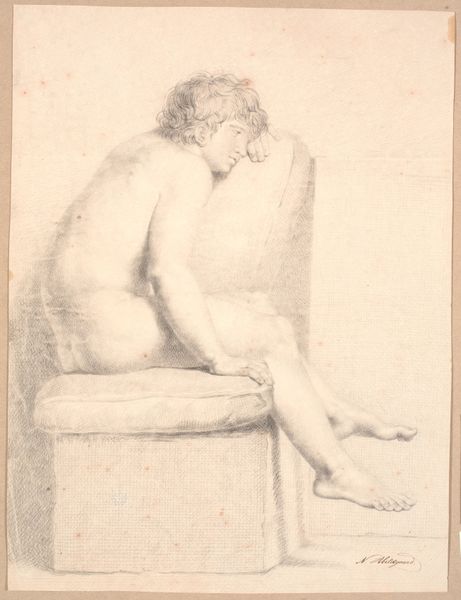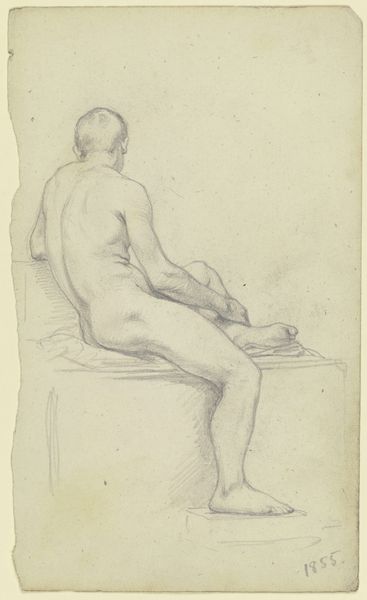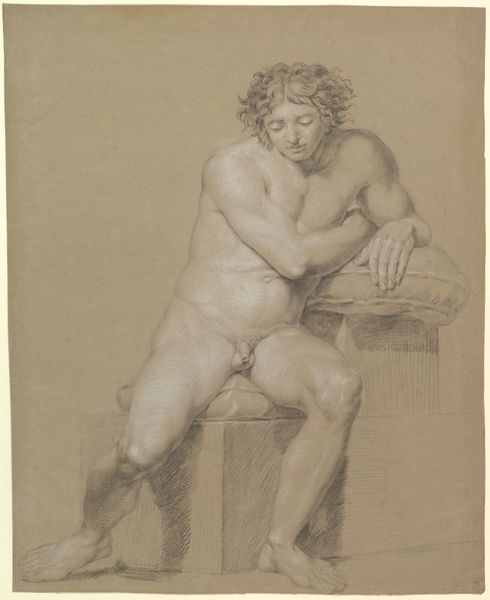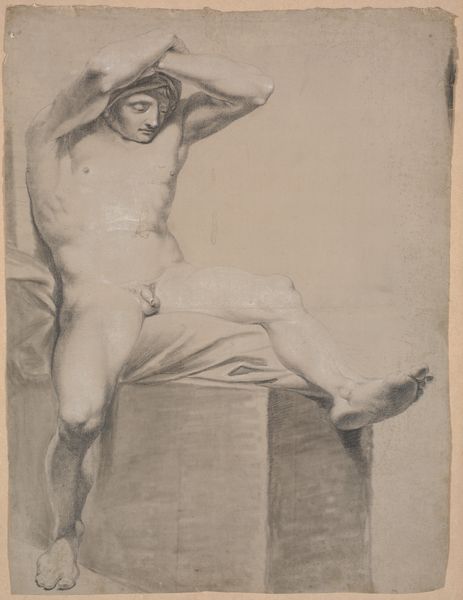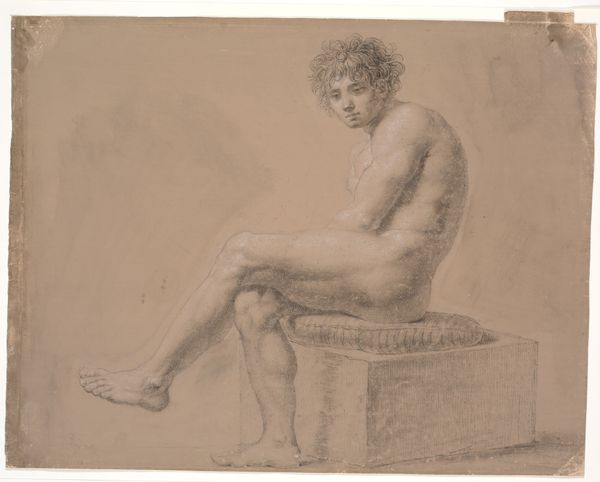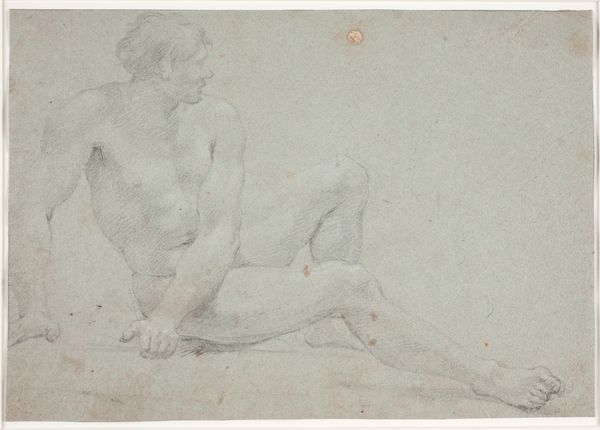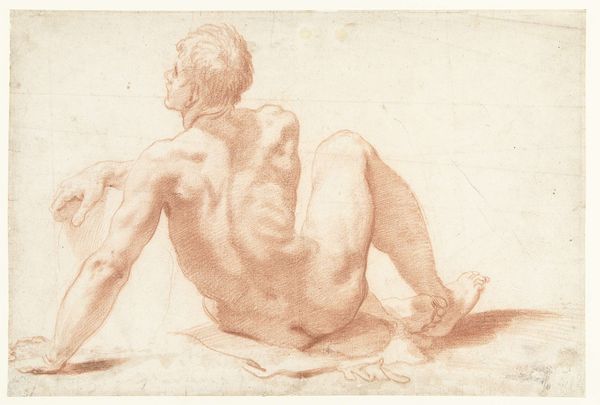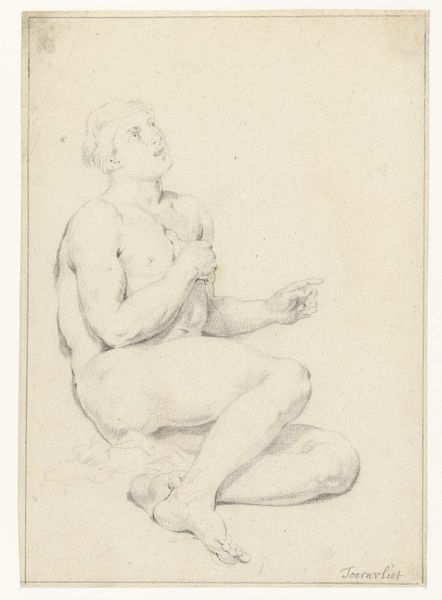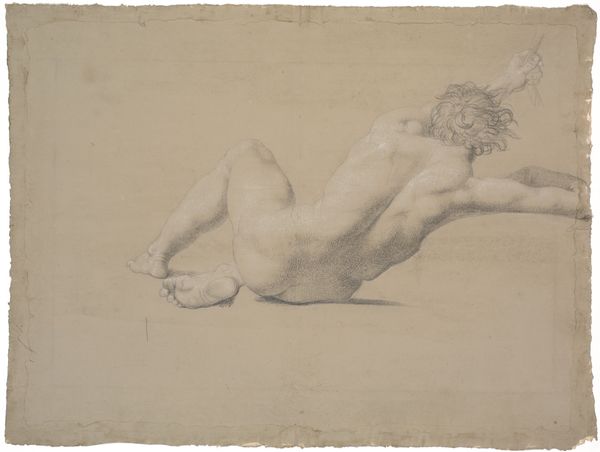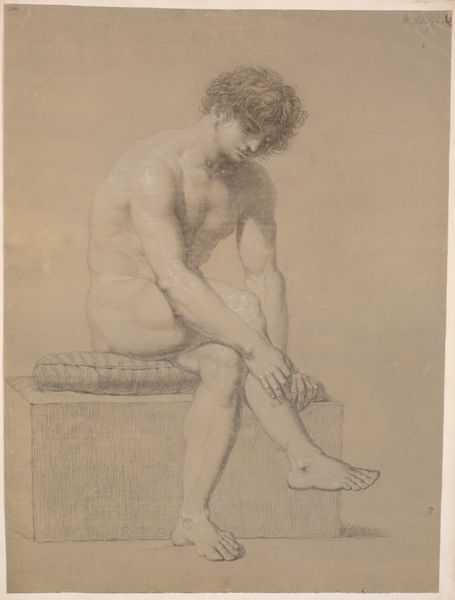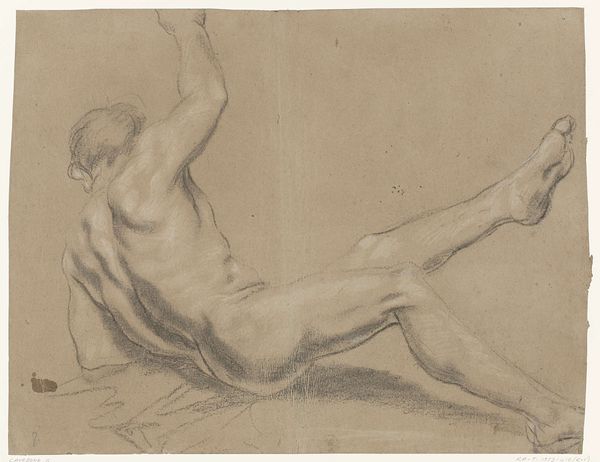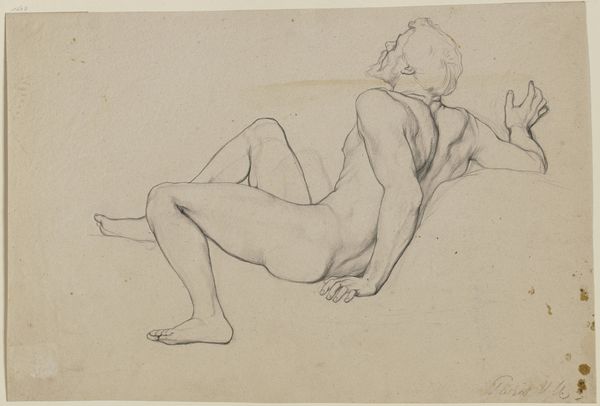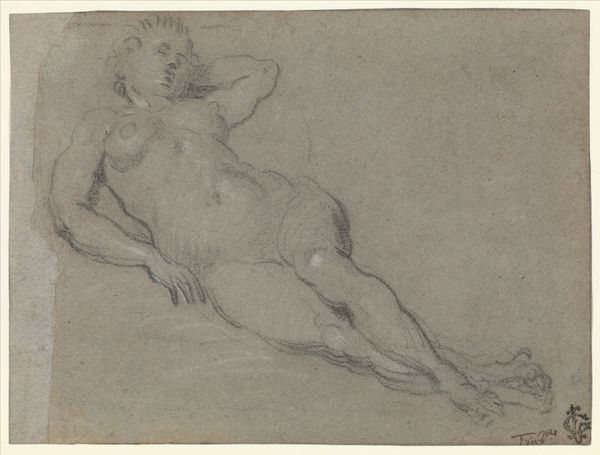
Siddende model med tørklæde på hovedet. Siddende på plint med pude. Vendt mod højre. Tilbagelænet mod en højere plint, hvorpå venstre arm hviler. Benene krydset 1778 - 1809
0:00
0:00
drawing, pencil
#
portrait
#
drawing
#
charcoal drawing
#
pencil drawing
#
pencil
#
portrait drawing
#
academic-art
#
nude
Dimensions: 440 mm (height) x 515 mm (width) (bladmaal)
Curator: Welcome. Today, we’re observing an intriguing piece from SMK - Statens Museum for Kunst. Created anonymously sometime between 1778 and 1809, it’s a drawing executed with pencil, portraying a nude male model. Editor: My first impression is one of quiet contemplation. The pose is so relaxed, yet there’s a palpable tension in the model’s back as he looks away. Curator: Precisely. This piece adheres strongly to the academic art style, common for its time. Note how the artist focused intently on anatomical accuracy, likely drawing inspiration from classical sculptures prevalent in artistic education. We can tell he's a classically trained artist, really skilled at rendering form and volume. Editor: I wonder about the power dynamics present. A nude model, almost certainly working-class, depicted by an artist who likely came from a very different social stratum. What does it mean to capture another human being's image so intimately, even when, as in this case, their individuality is somehow erased, due to the anonymity? Curator: These works were often preparatory studies. The artist would use this model as inspiration for other works in other disciplines. Editor: And also we need to be careful about reading 'nude' and our modern idea of it, especially considering issues around gender and the male gaze. Even when this drawing represents only a person and not 'an objectified person'—considering identity, race, and social standing matters to think what it really means. Curator: Absolutely. It gives us much food for thought, viewing this work through the lens of power and representation within artistic practices of that era. Editor: It reminds me that we have a continuous ethical obligation to consider these power structures embedded in how we study art, to encourage more equity inside these spaces. Curator: Yes, it truly emphasizes that art from the past offers invaluable opportunities for critically assessing how visual culture perpetuates, and challenges, various viewpoints over time. Editor: Thank you for helping us reflect through new perspectives about this academic artwork.
Comments
No comments
Be the first to comment and join the conversation on the ultimate creative platform.
